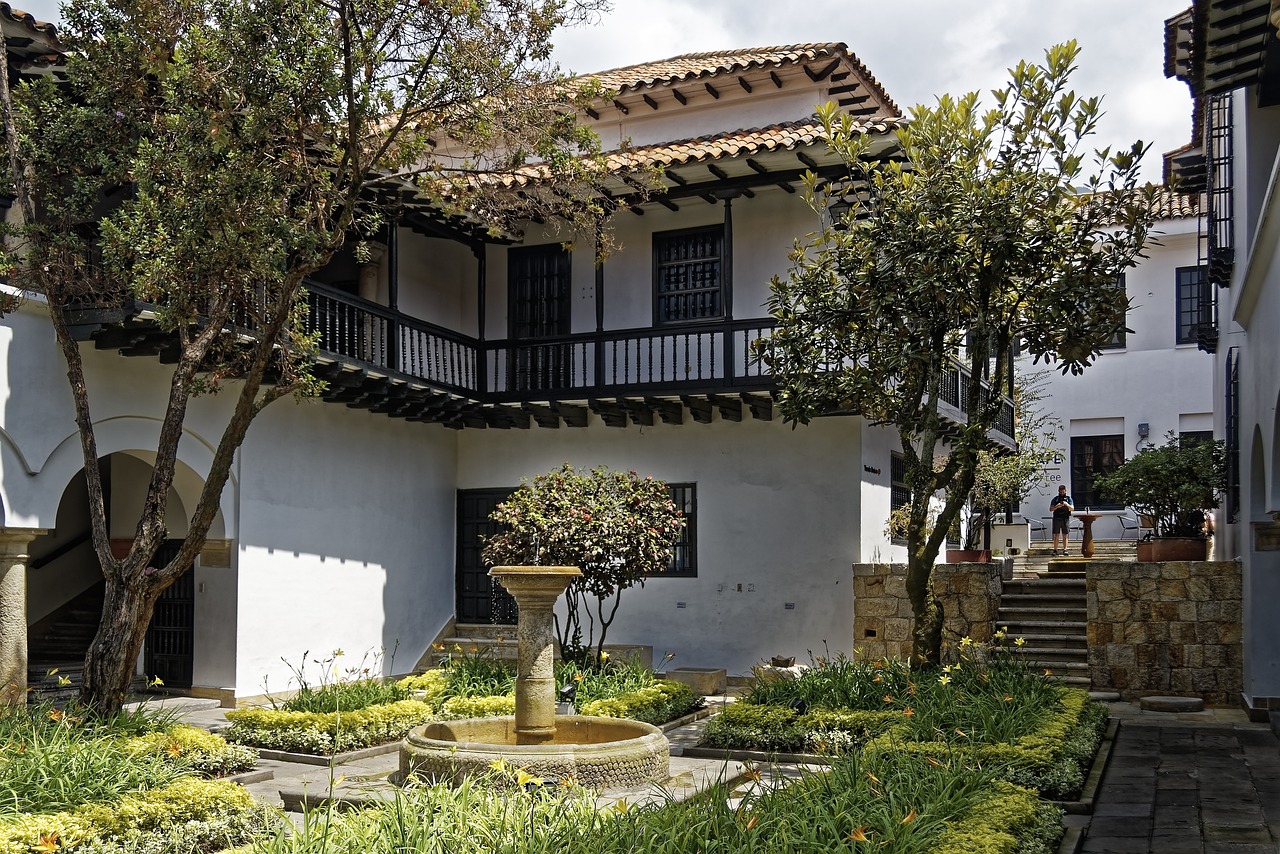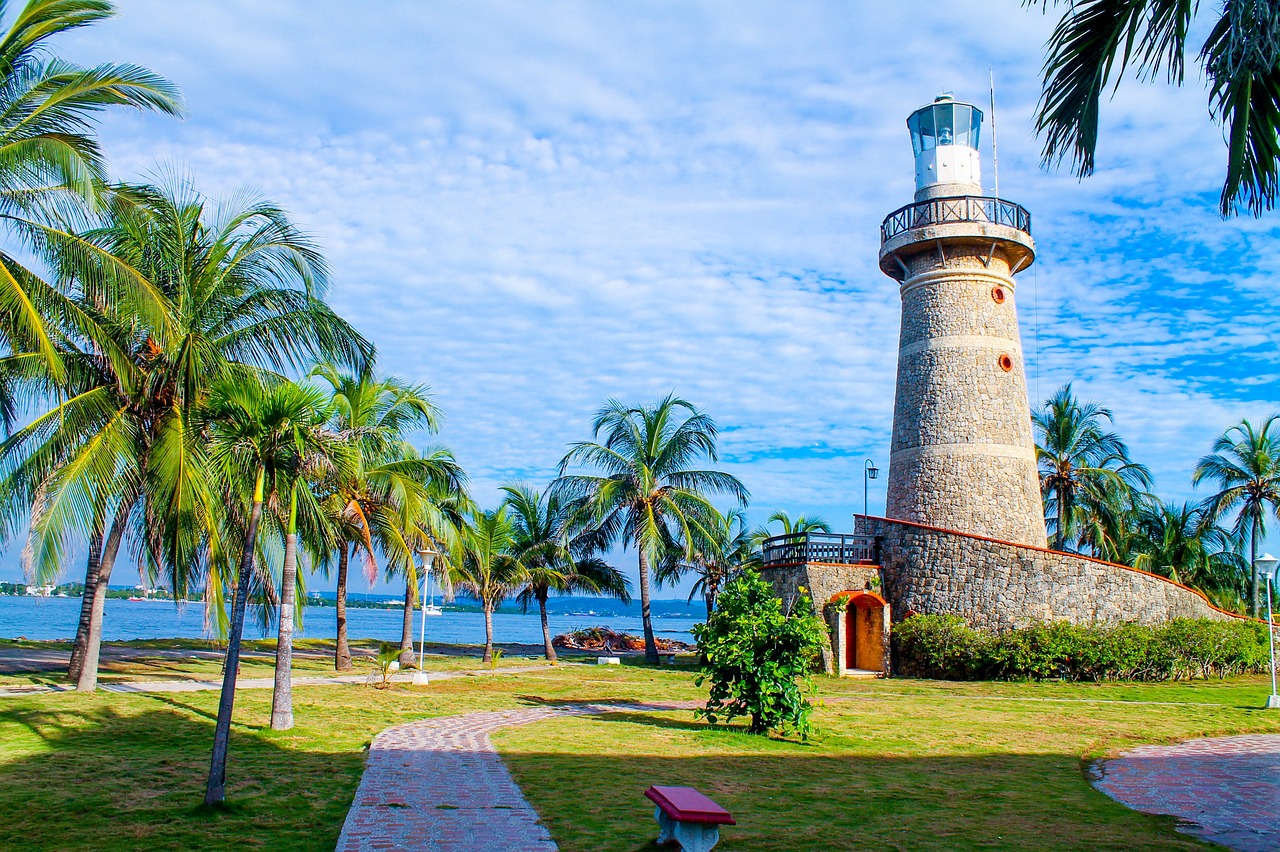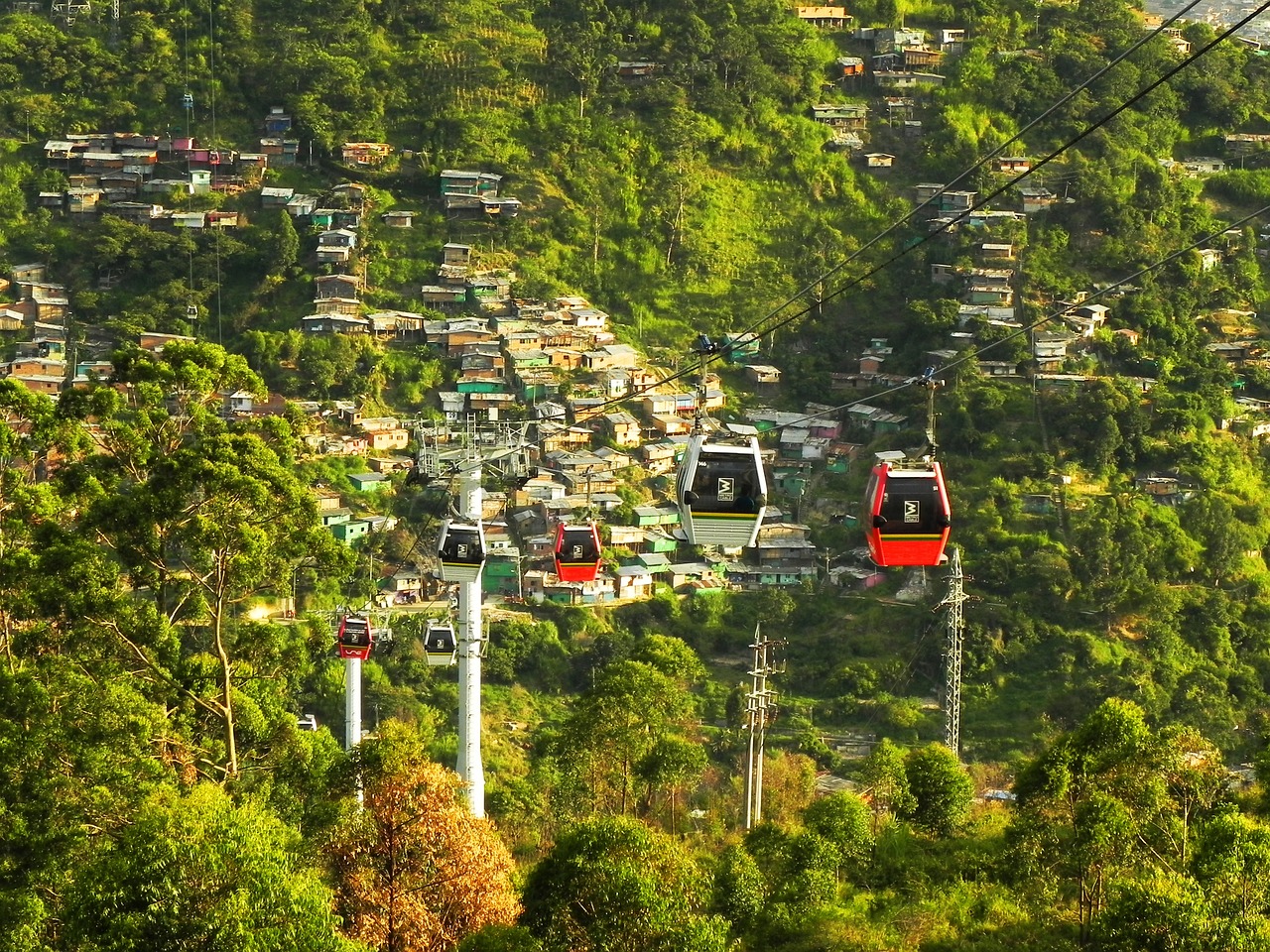Bogotá is the capital city of Colombia, located in the center of the country in the Andean region. It is the largest city in Colombia with a population of over 7 million people. Bogotá is a vibrant and dynamic city known for its rich cultural heritage, historic landmarks, and diverse cuisine. It is also a major economic, political, and cultural hub in South America.
Short History
Bogotá is the capital city of Colombia and one of the largest cities in South America. The area of Bogotá was originally inhabited by the indigenous Muisca people before the arrival of the Spanish in the 16th century. The city was officially founded in 1538 by the Spanish conquistador Gonzalo Jiménez de Quesada. During the colonial period, Bogotá became an important political and economic center for the Spanish Empire. In the 19th and 20th centuries, the city experienced significant growth and modernization. Today, Bogotá is a vibrant and diverse city known for its rich history, cultural attractions, and stunning natural beauty.
Architecture
Bogotá has a mixture of architectural styles, ranging from colonial and neoclassical to modern and contemporary. Some of the notable architectural landmarks in the city include:
- La Candelaria Historic District: This area of Bogotá is home to some of the city’s oldest buildings, including churches, colonial houses, and plazas.
- Teatro Colón: Built in the early 20th century, this neoclassical theater is known for its ornate facade and interior decorations.
- Torre Colpatria: Completed in 1979, this skyscraper is one of the tallest buildings in Bogotá and offers panoramic views of the city.
- Plaza de Bolívar: This public square in the heart of Bogotá is surrounded by several important government buildings, including the presidential palace and the cathedral.
- Biblioteca Virgilio Barco: Designed by architect Rogelio Salmona, this modern library is known for its use of brick and concrete and its open-air courtyards.
- El Campín Stadium: This sports venue, built in the 1930s, is a popular destination for soccer fans and has hosted several important international tournaments.
- Monserrate: This mountain overlooking Bogotá is home to a historic church and offers stunning views of the city below.
- National Museum of Colombia: Housed in a neoclassical building that was once a prison, this museum showcases Colombia’s rich history and cultural heritage.
- Gold Museum: This museum is home to an impressive collection of pre-Columbian gold artifacts, including jewelry, masks, and figurines.
- Usaquén: This neighborhood in the north of Bogotá has preserved its colonial architecture and is known for its lively flea markets and street fairs.
Museums and Galleries
Here are some of the most interesting museums and galleries in Bogotá:
- Museo del Oro (Gold Museum): One of the most important museums in Colombia, it houses the largest collection of pre-Columbian gold artifacts in the world.
- Museo Botero: The museum features the works of Fernando Botero, Colombia’s most famous contemporary artist, as well as other artists he has collected.
- Museo Nacional de Colombia: The museum showcases the history of Colombia from pre-Columbian times to the present day.
- Casa de la Moneda (Mint Museum): This museum is located in the historic center of Bogotá and features exhibits on the history of currency and the minting process.
- Museo de Arte Moderno de Bogotá (MAMBO): The museum houses an impressive collection of modern and contemporary art from Colombia and around the world.
- Museo de Arte Colonial: The museum is located in a restored colonial mansion and features a collection of colonial-era art and artifacts.
- Museo Santa Clara: This museum is housed in a former convent and features religious art and artifacts.
These are just a few of the many museums and galleries that Bogotá has to offer.
Landmarks and Monuments
- La Candelaria: The historic neighborhood of La Candelaria is home to many of Bogotá’s most iconic landmarks and monuments, including the Plaza de Bolivar, the Cathedral of Bogotá, and the Palace of Justice.
- Monserrate: This mountain peak is located just outside the city and offers breathtaking views of the city below. At the top of the mountain is a church, a restaurant, and a small market.
- Torre Colpatria: This skyscraper is one of the tallest buildings in Colombia and offers stunning views of Bogotá from its observation deck.
- Usaquén: This historic neighborhood in the northern part of the city is home to many colonial-era buildings and is a popular destination for shopping and dining.
- Teatro Colón: This historic theater in the heart of Bogotá is renowned for its stunning architecture and world-class performances.
- Plaza de Toros Santamaría: This bullfighting arena, located in the heart of Bogotá, has been a popular destination for fans of the sport since the early 20th century.
- National Museum of Colombia: This museum is home to a vast collection of artifacts and artwork that showcase Colombia’s rich history and cultural heritage.
- Gold Museum: This museum is dedicated to showcasing Colombia’s ancient gold artifacts and is home to one of the largest collections of pre-Columbian gold objects in the world.
- Quinta de Bolívar: This historic estate was once the home of Simón Bolívar, the legendary leader who played a crucial role in the fight for South American independence.
- Plaza de la Democracia: This public square is home to several important landmarks and monuments, including the National Capitol and the Palace of Justice.
Parks and Green Spaces
Here are some parks and green spaces worth visiting in Bogotá:
- Simón Bolívar Metropolitan Park: This is the largest urban park in Bogotá and one of the largest parks in Latin America. It has a lake, gardens, sports facilities, and outdoor concert venues.
- Quebrada La Vieja Reserve: This is a nature reserve located on the eastern hills of Bogotá. It has hiking trails, waterfalls, and diverse flora and fauna.
- Bogotá Botanical Garden: This is a botanical garden with over 19,000 plants, including many native to Colombia. It has outdoor gardens, greenhouses, and a butterfly house.
- Parque de la 93: This is a park located in the upscale neighborhood of El Chicó. It has a lake, restaurants, and cultural events.
- Parque Nacional Natural Chingaza: This is a national park located in the eastern Andes Mountains outside of Bogotá. It has hiking trails, waterfalls, and diverse wildlife, including spectacled bears.
- Jardín Botánico de Bogotá: This is another botanical garden located in Bogotá. It has over 3,000 plant species, an orchid garden, and a butterfly house.
- Parque El Virrey: This is a park located in the northern part of Bogotá. It has a lake, bike and walking paths, and playgrounds.
- Parque de los Novios: This is a small park located in the La Candelaria neighborhood of Bogotá. It has a statue of two lovers and is a popular spot for taking photos.
- Parque Nacional Enrique Olaya Herrera: This is a park located in the Chapinero neighborhood of Bogotá. It has a lake, walking paths, and a sports complex.
- Parque de los Periodistas: This is a park located in the heart of Bogotá. It has a monument to journalists and is a popular spot for events and demonstrations.
Shopping Districts
Here are some of the popular shopping districts in Bogotá:
- Zona Rosa: Located in the heart of Bogotá’s financial district, Zona Rosa is known for its upscale shopping, trendy restaurants, and vibrant nightlife. It is a popular destination for tourists and locals alike.
- Centro Comercial Santafé: This is one of the largest shopping malls in Bogotá, with over 400 stores spread across four levels. It is home to a variety of international and local brands, as well as a cinema, food court, and entertainment options.
- Centro Comercial Andino: Another popular shopping mall, Centro Comercial Andino is known for its high-end boutiques and luxury brands. It also has a good selection of restaurants and cafes.
- Usaquén: This historic district is home to a popular flea market on Sundays, where you can find local handicrafts, textiles, and other unique souvenirs. The area also has many artisanal shops, boutiques, and galleries.
- La Candelaria: Bogotá’s oldest neighborhood, La Candelaria, is a popular destination for its colonial architecture, museums, and cultural attractions. It also has many artisanal shops and boutiques selling traditional Colombian crafts and products.
- Avenida Jiménez: This busy street is known for its outdoor markets, street vendors, and affordable shopping options. It’s a great place to find unique souvenirs and bargain deals.
- Chapinero: This trendy neighborhood is home to a variety of independent boutiques, vintage shops, and designer studios. It’s a great place to find unique fashion and accessories.
- Plaza de las Américas: Located in the western part of Bogotá, Plaza de las Américas is a large shopping mall with a variety of stores, restaurants, and entertainment options. It’s a popular destination for families.
- Gran Estación: This shopping mall is conveniently located near Bogotá’s main airport, El Dorado. It has a good selection of international and local brands, as well as a cinema and food court.
- Galería Artesanal de Colombia: This market is located in the heart of Bogotá and is known for its traditional Colombian handicrafts, including textiles, pottery, and jewelry. It’s a great place to find unique souvenirs and gifts.
Food and Drink
Bogotá is known for its diverse and delicious cuisine, influenced by Spanish, Indigenous, and African cultures. Some of the must-try food and drinks in Bogotá include:
- Ajiaco: A hearty soup made with chicken, corn, potatoes, and a variety of local herbs.
- Empanadas: Fried or baked pastry filled with meat, potatoes, or cheese.
- Arepas: Corn cakes filled with cheese, meat, or eggs.
- Chicha: A fermented corn drink, often served with cinnamon and sugar.
- Tamales: A traditional dish made of corn dough filled with meat, vegetables, and spices.
- Coffee: Colombia is known for its high-quality coffee, and Bogotá is home to many excellent cafes.
- Chocolate: Bogotá is also known for its chocolate, which is made from locally grown cocoa beans.
- Aguardiente: A traditional alcoholic drink made from sugar cane, with a distinctive anise flavor.
- Fruit juices: Bogotá is home to many exotic fruits, and you can find a variety of delicious fresh fruit juices throughout the city.
- Bandeja paisa: A traditional Colombian dish featuring rice, beans, steak, sausage, fried egg, and avocado.
These are just a few examples of the many delicious foods and drinks you can try in Bogotá.
Transportation
Bogotá has various modes of transportation that cater to different needs and budgets. Here are some of the best ways to move around the city:
- Transmilenio: This is Bogotá’s bus rapid transit system and is a popular and affordable way to move around the city. It has exclusive lanes that bypass traffic and connects various neighborhoods.
- Taxis: Taxis are a convenient way to get around the city, and there are plenty available. However, it’s important to only use registered taxis with a meter to avoid scams.
- Bicycles: Bogotá has an extensive network of bike lanes and bike-sharing systems, making it a great option for those looking for an eco-friendly and active way to explore the city.
- Walking: Walking is a great way to explore the city center, as many of the main attractions are located close to each other.
- Uber: Uber is also available in Bogotá and is a popular option for those looking for a more comfortable and reliable mode of transportation.
It’s important to note that traffic can be heavy in Bogotá, especially during peak hours, so it’s best to plan your route in advance and allow extra time for travel.
City Safety
Bogotá has made significant progress in reducing crime and violence in recent years, but it still has a reputation for being a relatively unsafe city. As with any major city, there are areas that are safer than others and precautions should be taken to ensure personal safety. It is recommended to stay aware of your surroundings, avoid carrying large amounts of cash, and avoid traveling alone at night. It is also advisable to take official taxis or use ride-sharing apps for transportation.
Expensive or Cheap
Compared to other major cities in South America, Bogotá can be considered relatively affordable. However, it is still more expensive than many smaller cities and towns in Colombia. The cost of living in Bogotá can vary depending on where you live and your lifestyle, but in general, it is more expensive than other cities in Colombia such as Medellín or Cali. The cost of food, transportation, and housing in Bogotá is generally higher than in other Colombian cities, but still lower than in many other major cities around the world. Overall, Bogotá can be considered a mid-range city in terms of cost of living.
Best Time to Travel
The best time to travel to Bogotá is during the dry season, which typically runs from December to March and then from June to August. During these months, the weather is typically mild and sunny, making it an ideal time for outdoor activities and sightseeing. However, it is important to note that Bogotá’s location at high altitude means that temperatures can still be quite cool, especially at night, so it is recommended to bring warm clothing. The rainy season in Bogotá runs from April to May and from September to November, with heavy rainfall and the possibility of flooding and landslides, which can make travel more difficult.
Date Ideas
Here are some date ideas in Bogotá:
- Take a romantic stroll through the historic neighborhood of La Candelaria, where you can admire the colonial architecture and colorful street art.
- Enjoy a picnic at the beautiful Simón Bolívar Metropolitan Park, which boasts large green areas, lakes, and a variety of recreational activities.
- Explore the Botanical Garden of Bogotá, where you can marvel at the diverse flora and fauna, walk through themed gardens, and even spot some birds.
- Watch a play, musical, or concert at the Teatro Colón, one of Bogotá’s most iconic and historic theaters.
- Take a cable car ride up to the top of Monserrate Mountain, where you can enjoy stunning panoramic views of the city, visit the beautiful church, and dine at one of the many restaurants.
- Visit the Salt Cathedral of Zipaquirá, a unique underground cathedral carved out of a salt mine, located just outside of Bogotá.
- Learn about Colombian history and culture at the National Museum of Colombia, which features an extensive collection of pre-Columbian artifacts, art, and historical exhibits.
- Explore the vibrant street art scene of Bogotá on a walking tour of the city’s best graffiti murals and installations.
- Experience the nightlife of Bogotá by taking a salsa dancing class or hitting up one of the city’s many bars or clubs.
- Finally, indulge in the delicious local cuisine of Bogotá, which includes dishes like bandeja paisa, a hearty platter of meat, beans, rice, and plantains, and ajiaco, a savory soup made with chicken, potatoes, and corn.
Fun and Interesting Facts
Here are some fun and interesting facts about Bogotá:
- Bogotá is the capital and largest city in Colombia, with a population of over 7 million people.
- The city is located 2,640 meters (8,660 feet) above sea level in the Andes Mountains, making it one of the highest capital cities in the world.
- Bogotá has a rich history, dating back to pre-Columbian times when it was inhabited by the indigenous Muisca people. The Spanish founded the city in 1538.
- The city’s name comes from Bacatá, the name of the Muisca ruler who ruled over the area before the Spanish arrived.
- Bogotá is known for its stunning architecture, which combines colonial, art deco, and modern styles. Some of the most notable buildings include the Teatro Colón, the Palacio de San Francisco, and the Torre Colpatria.
- The city is also home to many museums and art galleries, including the Museo del Oro, the Botero Museum, and the National Museum of Colombia.
- Bogotá has a thriving nightlife, with many bars, clubs, and live music venues. The city is also known for its salsa dancing scene.
- The food in Bogotá is a mix of Spanish, indigenous, and African influences. Some of the most popular dishes include ajiaco (a chicken and potato soup), arepas (corn cakes), and bandeja paisa (a hearty platter of rice, beans, meat, and fried egg).
- Bogotá has a well-developed public transportation system, including a network of buses, trams, and cable cars. The city also has a bike-sharing program called Ciclovía.
- Finally, Bogotá is a city of contrasts, with modern skyscrapers and historic neighborhoods, bustling streets and peaceful parks. It’s a city that rewards exploration and is full of surprises.
Conclusion
Bogotá is a vibrant and dynamic city with a rich history, stunning architecture, and a thriving cultural scene. Despite some safety concerns, the city has a lot to offer visitors and residents alike, including world-class museums, exciting nightlife, and delicious food. Whether you’re interested in history, art, music, or just want to explore a new city, Bogotá is definitely worth a visit.


